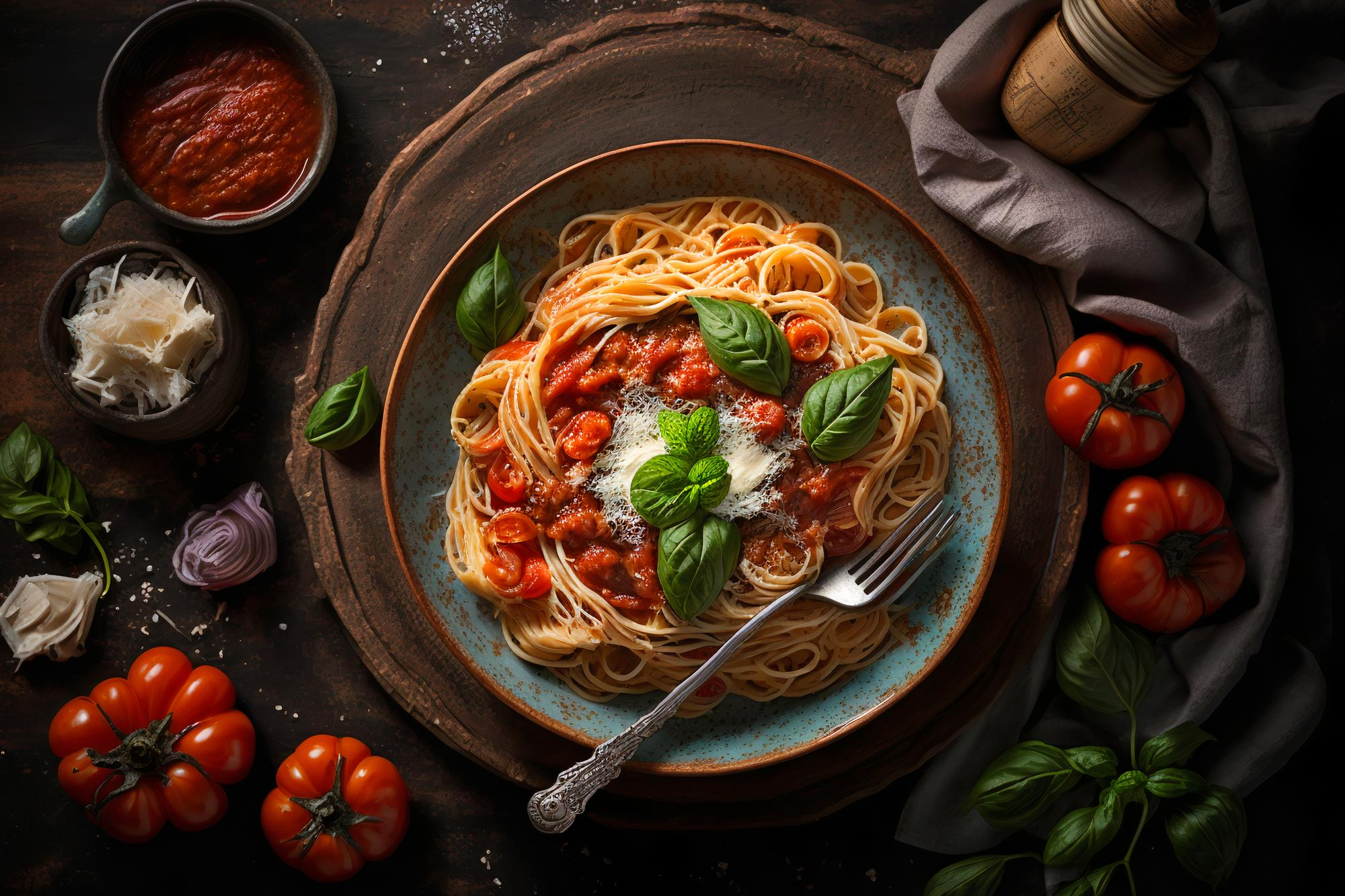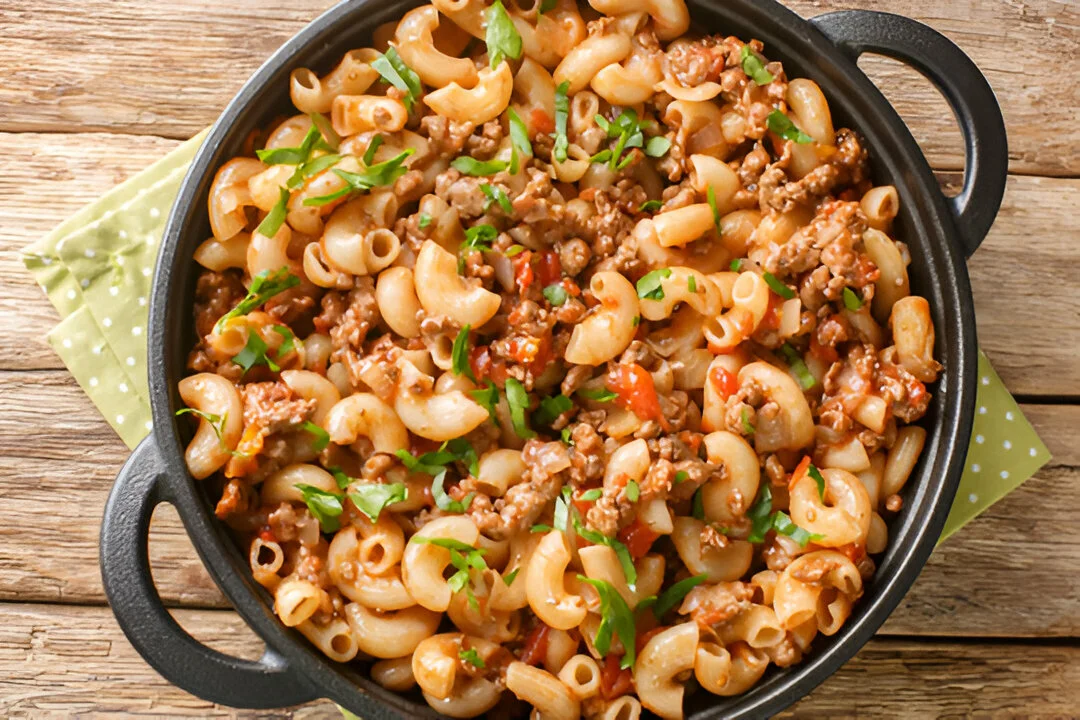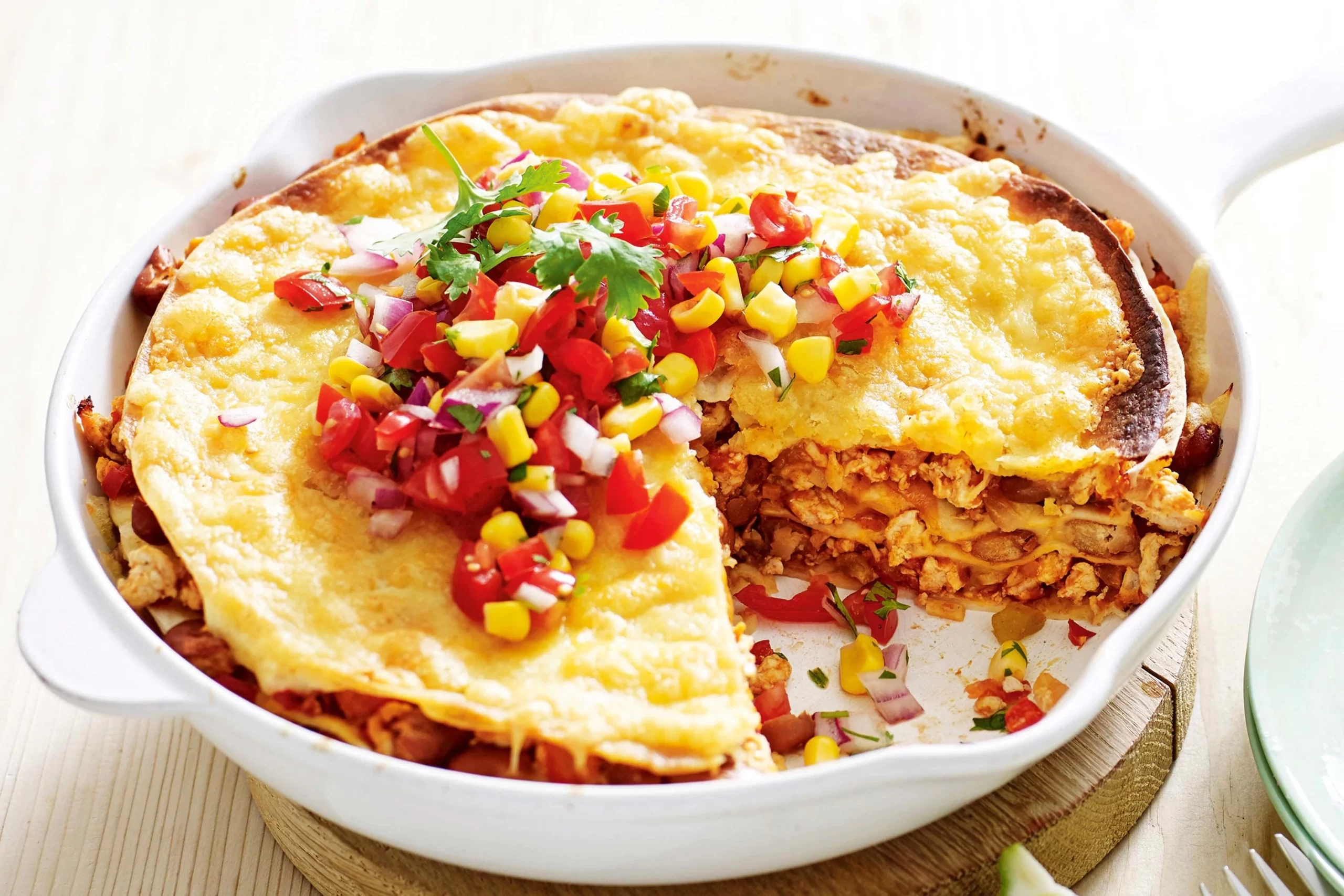Pasta with marinara sauce is a dish that resonates with comfort and simplicity, yet holds a depth of flavor that can tantalize even the most discerning palates. This article delves into the heart of this classic dish, exploring its ingredients, variations, and the art of perfecting its preparation. From the historical roots of marinara sauce to advanced cooking techniques and dietary considerations, we’ll cover every aspect to help you master this beloved dish. Whether you’re a seasoned chef or a home cook, this guide promises to enhance your culinary skills and enrich your understanding of pasta with marinara sauce.
Part 1: Introduction to Pasta with Marinara Sauce
Exploring the Charm of Traditional Italian Pasta Sauce

Ah, pasta with marinara sauce! It’s a dish that almost everyone has a fond memory of, be it from a cozy family dinner or a delightful meal at a favorite restaurant. This dish isn’t just about mixing pasta with tomato sauce; it’s a culinary experience that speaks volumes about tradition and flavor.
The Timeless Appeal of Pasta with Marinara Sauce
This dish isn’t just about mixing pasta with tomato sauce; it’s a culinary experience that speaks volumes about tradition and flavor, much like other comfort foods such as the Pumpkin Banana Loaf.. Its simplicity is its strength – a few quality ingredients coming together to create a dish that’s both hearty and heartwarming. The key lies in the harmony of flavors, where the tanginess of the tomatoes blends seamlessly with the aromatic herbs and spices.
Cultural Roots and Significance of Classic Marinara Pasta
Tracing back to the southern regions of Italy, marinara sauce, or salsa marinara, has its roots in the cuisine of Naples. The term “marinara” is derived from marinaro, meaning sailor. Legend has it that this sauce was a staple among the sailors due to its ease of preparation and long shelf life. Over time, it has evolved, with each region adding its unique touch, but the essence remains the same – a celebration of the tomato in its purest form.
In this part of our culinary journey, we’ve just scratched the surface of the rich history and appeal of pasta with marinara sauce. As we move forward, we’ll dive deeper into the ingredients and techniques that make this dish a timeless classic. Stay tuned for the next part, where we’ll explore the key ingredients for the perfect marinara sauce and the best pasta selections to complement it.
Part 2: Ingredients and Variations
Essential Components for an Authentic Marinara Sauce Recipe

Creating the quintessential marinara sauce starts with understanding its core components. The foundation of any good marinara is, of course, tomatoes. But not just any tomatoes – you want to look for ripe, juicy varieties that are rich in flavor. San Marzano tomatoes, hailing from the volcanic soils near Naples, are often hailed as the gold standard for marinara sauces. Their balance of sweetness and acidity is unparalleled.
Selecting the Best Tomatoes for Rich Italian Sauce
When selecting tomatoes, freshness and quality are paramount. If fresh San Marzanos are out of reach, high-quality canned versions can do the trick. The key is to avoid anything overly processed – the fewer the additives, the better.
Herbs and Spices: Perfecting the Marinara Flavor
Next up, herbs and spices. Garlic, basil, and oregano are the holy trinity here. Fresh basil adds a sweet, aromatic touch, while oregano brings a hint of earthiness. Garlic, used judiciously, infuses the sauce with a warm, pungent flavor that’s hard to resist. And let’s not forget a good pinch of salt – it’s crucial for bringing out the flavors of the tomatoes and herbs.
Choosing the Best Tomatoes: The Heart of Italian Sauce
Choosing the right pasta to pair with your marinara sauce is like selecting the perfect dance partner – it can elevate the entire experience.
Best Pasta Types for Marinara Sauce
While spaghetti is a classic choice, don’t be afraid to experiment. Penne, rigatoni, or even fusilli can offer delightful textures and shapes that cling to the sauce beautifully. The key is to choose a pasta that complements the lightness and texture of the marinara, allowing the sauce to be the star of the show.
In this section, we’ve uncovered the secrets behind the key ingredients of a stellar marinara sauce and the art of selecting the perfect pasta. As we continue our exploration, we’ll delve into the cooking techniques that bring out the best in these ingredients. Stay tuned for an in-depth look at mastering the art of sauce preparation and perfecting pasta cooking in the next part.
Part 3: Cooking Techniques
Mastering the Art of Sauce Preparation

The magic of a great marinara sauce lies not just in the ingredients, but in how they’re cooked. The process is simple, yet each step is crucial to achieving that perfect blend of flavors.
Simmering Techniques for Flavor Enhancement
The key to a flavorful marinara sauce is a slow, gentle simmer. This method allows the flavors to meld and intensify over time. Start by sautéing garlic gently in olive oil – but watch closely, as garlic can go from fragrant to burnt in a blink. Then, add the tomatoes and let the sauce simmer. The longer it cooks, the more the flavors develop. A simmer of at least 30 minutes is ideal, but if you have the time, an hour or more can work wonders.
Balancing Flavors in Marinara Sauce
Balancing the flavors in your marinara sauce is an art. If the sauce is too acidic, a pinch of sugar can help mellow it out. Conversely, a dash of lemon juice or vinegar can brighten up a sauce that’s too sweet. Remember, the goal is harmony – you want to taste the tomatoes, herbs, and garlic in equal measure.
Perfecting Pasta Cooking
Cooking pasta might seem straightforward, but a few tips can elevate your pasta game.
Achieving Al Dente Texture
The term al dente – firm to the bite – is what you’re aiming for. To achieve this, cook the pasta in a large pot of boiling, salted water. Stir occasionally to prevent sticking. Check the pasta a few minutes before the package’s recommended cooking time – it should be tender yet firm. And don’t forget to save a cup of pasta water before draining. This starchy liquid is a secret weapon for adjusting the sauce’s consistency.
In this part, we’ve journeyed through the essential cooking techniques for creating a sublime marinara sauce and perfectly cooked pasta. Next up, we’ll explore advanced tips and tricks to elevate your marinara sauce, along with creative serving suggestions. Stay tuned for these expert insights in the upcoming section.
Part 4: Advanced Tips and Tricks
Elevating Your Marinara Sauce

Once you’ve mastered the basics of making marinara sauce, it’s time to add your personal touch. This is where you can get creative and elevate your sauce to new heights.
Incorporating Unique Ingredients
Consider adding a splash of good quality red wine for depth, or a sprinkle of chili flakes for a bit of heat. Anchovies or capers can introduce a new layer of umami. Remember, the key is subtlety – you want to enhance, not overpower, the fundamental flavors of the sauce.
Sauce Texture Variations
The texture of your marinara sauce can vary depending on your preference or the dish you’re pairing it with. For a smoother sauce, consider blending it with an immersion blender. For a chunkier texture, a simple hand-crush of the tomatoes will do. The consistency of your sauce can transform the overall feel of the dish.
Creative Serving Suggestions
Pasta with marinara sauce is versatile, and there are countless ways to serve it up.
Pairing with Wines and Sides
A glass of Chianti or a Sangiovese pairs beautifully with the acidity of the tomatoes. For sides, consider a crisp salad with a balsamic vinaigrette or some rustic garlic bread, or even try pairing with unique desserts like Earl Grey Cookies for a complete meal experience. These additions can turn a simple pasta dish into a feast.
In this section, we’ve explored advanced techniques and creative ideas to elevate your marinara sauce and serving suggestions. Next, we’ll delve into dietary considerations, offering tips for making vegan and gluten-free variations of this classic dish. Stay tuned for these inclusive and health-conscious adaptations in the next part.
Part 5: Dietary Considerations
Making Vegan and Gluten-Free Variations
Pasta with marinara sauce can be easily adapted to suit various dietary needs without compromising on taste. Whether you’re catering to vegan diets or gluten sensitivities, these modifications ensure everyone can enjoy this classic dish.
Gluten-Free Pasta Options
For those avoiding gluten, the market is abundant with alternatives. Rice, quinoa, and corn pasta are excellent gluten-free options that maintain a similar texture and flavor to traditional wheat pasta. Just be sure to check the cooking instructions, as these varieties often have different cooking times.
Vegan Substitutes for Traditional Ingredients
Creating a vegan marinara sauce is straightforward since the traditional recipe is already plant-based. However, if you’re looking to replace cheese toppings, nutritional yeast or vegan cheese alternatives can offer a similar cheesy flavor and texture. For a richer sauce, consider blending in some soaked cashews for creaminess.
In this part, we’ve covered how to adapt pasta with marinara sauce for gluten-free and vegan diets, ensuring that this beloved dish can be enjoyed by all. Next, we will dive into the Frequently Asked Questions section, where we’ll address common queries and provide expert answers to enhance your cooking experience. Stay tuned for insightful tips and solutions in the upcoming section.
Part 6: FAQs Section
Frequently Asked Questions
In this section, we address some of the most common questions about pasta with marinara sauce, providing expert answers to enhance your cooking and dining experience.
Common Queries About Pasta with Marinara Sauce
- Can I make marinara sauce in advance? Absolutely! Marinara sauce actually tastes better when made ahead, as it allows the flavors to meld together. Store it in the refrigerator for up to 4 days or freeze it for longer storage.
- How can I thicken my marinara sauce? If your sauce is too runny, let it simmer uncovered to reduce and thicken. Alternatively, a small amount of tomato paste can help achieve the desired consistency.
- Is it possible to make marinara sauce without onions and garlic? Yes, you can. While these ingredients add depth, you can omit them for a simpler flavor or due to dietary restrictions. Increase herbs like basil and oregano to compensate.
Expert Answers to Popular Questions
- What’s the best way to reheat pasta with marinara sauce? For best results, reheat over low heat on the stove, which is also a method used in other quick family meals like Muddy Buddies.
- Can I add meat to my marinara sauce? Certainly! Ground beef, sausage, or meatballs are popular additions. Just cook the meat thoroughly before adding it to the sauce.
- How do I prevent pasta from sticking together? Stir the pasta occasionally while cooking and use plenty of water. Adding oil to the cooking water is not necessary and can actually prevent the sauce from adhering to the pasta.
In this FAQs section, we’ve tackled some of the most common questions surrounding pasta with marinara sauce, offering practical advice and solutions. Next, we will explore enhancing SEO with LSI and NLP keywords, ensuring your content about this beloved dish reaches a wider audience. Stay tuned for valuable insights on optimizing your pasta with marinara sauce content in the next part.
Part 8: External Links and Resources
Additional Resources and References
To further enrich your journey in mastering pasta with marinara sauce, here are some handpicked resources. These links provide additional information, recipes, and tips to enhance your cooking experience.
Recommended External Links
- Diverse Marinara Sauce Recipes: Explore a variety of recipes that use marinara sauce as a base, offering creative and delicious ways to enjoy this classic sauce.
- Top Jarred Marinara Sauces: If you’re short on time, this guide helps you choose the best jarred marinara sauces for a quick yet tasty meal.
- Variety of Pasta Sauce Recipes: Expand your repertoire with a collection of pasta sauce recipes, perfect for various occasions and preferences.
In this section, we’ve provided additional resources to deepen your understanding and skills in making pasta with marinara sauce. These external links offer a wealth of knowledge and inspiration, ensuring your culinary adventures with this dish are both successful and enjoyable. Stay tuned for our final thoughts and encouragement for experimentation in the concluding part of this article.
Part 9: Conclusion
Wrapping Up the Marinara Sauce Journey
As we conclude our comprehensive exploration of pasta with marinara sauce, it’s clear that this dish is much more than a simple combination of pasta and tomato sauce. It’s a culinary emblem of comfort, tradition, and versatility. From selecting the right ingredients to mastering cooking techniques, and adapting the dish to various dietary needs, we’ve covered a spectrum of topics to enhance your cooking experience.
The beauty of pasta with marinara sauce lies in its simplicity and the endless possibilities for customization. Whether you’re a novice cook or a seasoned chef, this dish offers a canvas for creativity and experimentation. Remember, cooking is not just about following recipes; it’s about making them your own. So, don’t hesitate to experiment with different ingredients, spices, and herbs to create a version of this classic dish that speaks to your palate.
We hope this article has inspired you to embrace the art of cooking pasta with marinara sauce and to explore the rich flavors and traditions it embodies. Happy cooking, and buon appetito!









